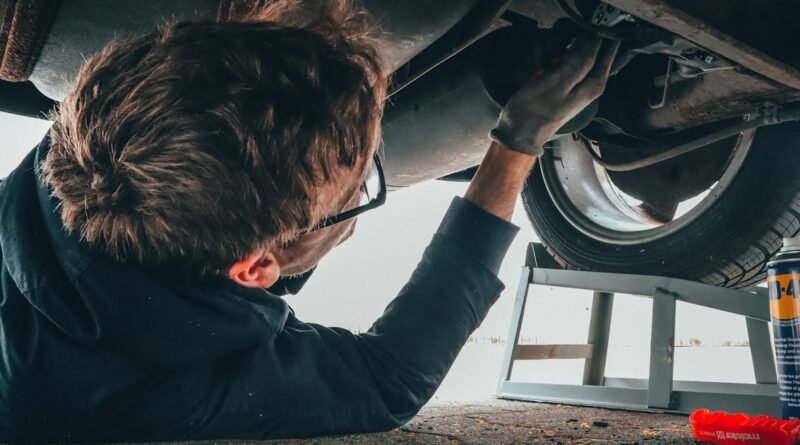Why does your car lose water? & causes & solutions
The most common type of transportation we use in our daily lives is road transportation. There are many main means of transportation for road transportation. The most preferred and used means of transportation is the car. Almost every family around the world has a car that they use personally. When using personal vehicles, care is taken to use them carefully and in a clean manner. One of the most important things to pay attention to while driving is the maintenance of the vehicle. If you choose to use a car for a long time, you should have it maintained periodically. In this way, you can use your vehicle without any problems for many years.
Maintenance Needs.
In terms of maintenance, the car has certain maintenance needs. These treatments include heavy maintenance and light maintenance. Among the intensive maintenance;
- The vehicle’s timing set is checked and replaced if its life has expired.
- Brake pads and brake discs are checked
- If your vehicle is manual, the clutch set and pressure pads are carefully examined.
- Headlight adjustment and wiper control are carried out
- Tie rod adjustment, tie rod arms and tie rod shafts are checked to see if there are any problems in the undercarriage.
- Gaskets and seals are carefully examined to see if there is any oil leakage.
These types of maintenance are generally performed in heavy maintenance depending on the condition of the vehicle. These maintenances do not have a specific duration and are generally carried out every 100,000 kilometers and are carried out routinely and regularly. Apart from this, one of the most important maintenance performed, in addition to heavy maintenance, is light maintenance.
Light maintenance is generally carried out every 10,000 kilometers. In this way, your vehicle’s periodic maintenance is checked and the engine oil and air filter are changed. In addition to these processes, engine water is checked .
One of the most important features among these maintenance services is engine water. One of the most important reasons why engine water is important is that it cools the engine and prevents it from overheating. An engine operating at a certain level needs a certain factor to cool it when it reaches high temperatures; in this case, the most efficiently used substance is water.
Being clean, the water prevents the engine, known as the heart of the car, from overheating and ensures its efficient operation. This fluid, which requires the most attention during periodic maintenance, is among the areas that should not be neglected and should be checked during maintenance. Even though periodic maintenance is carried out, your vehicle may sometimes lose water in certain situations. You can examine in more detail in which situations your vehicle loses water or what you should do when it does.
CRACKED RESERVE WATER TANK
Many parts may wear out over time, but with lifespan and regular maintenance, there can be an easy solution. One of the biggest reasons why vehicles lose water is the cracks in the spare water tank of the cars. The cause of these cracks is generally unknown. If you have not had your vehicle maintained for a long time or if you have not had a detailed look at it after an accident, it may leak water due to a small crack.
The growth of this crack is generally invisible. Although there is an easy solution, if you cannot notice when your vehicle loses water, you may have a big problem. If you perform water checks regularly and then have regular maintenance done, you will not experience such problems. As a solution, if the spare water tank cracks, the most guaranteed solution is to purchase a new spare water tank. This replacement process, which can be easily done in industrial areas or services, indicates that your vehicle will have a healthier and longer performance.
HOLES OR CRACKS IN THE HOSES GOING TO THE ENGINE
One of the most common situations when your vehicle loses water is cracks or holes in the hoses. The water circulating in the upper part of the engine under high pressure causes some hoses to wear out with the temperature. Subsequently, the deformations that occur in these hoses cause water to flow from the hoses drop by drop over time. It is known that water flows much less from hoses while traveling. When the moving vehicle stops and the water in the hoses flows, your vehicle may lose water. In these cases, you can get the clearest diagnosis by taking your vehicle to the service.
As a solution, a longer-lasting hose can be installed by replacing the torn or cracked hose. In general, the most common water loss events occur due to tornadoes. To keep your hoses in better health, one of the most important things you should do is use antifreeze. This antifreeze, which is used only in winter and not preferred in summer, should actually be used regularly in summer and winter. When performing periodic maintenance on your vehicle, be sure to add antifreeze and enjoy a safe journey.
GASKET BURNING
When you maintain your vehicle properly, such situations rarely occur. First of all, there is a gasket on the blog cover to prevent any water from entering the engine. With insufficient water circulating in the engine, the engine does not cool itself sufficiently, causing the gasket to burn and water to enter the engine block. If the water level is at the lowest level when you open the engine hood, add water to it.
If water flows heavily again even after you add water, water is getting into the engine because the gasket is burnt. If there is no leakage when you perform other checks, the problem may be caused by the gasket. To solve this situation, you can go to an engine master who does reliable and clean workmanship. You can drive comfortably and safely by removing the top cover of your vehicle, replacing it if the problem is in the gasket, and following a good maintenance.
THERE IS A HOLE OR CRACK IN THE RADIATOR
One of the most important factors for the engine to operate efficiently and smoothly is the regular operation of the circulation system. The heated water passes through the honeycombs and returns to the reserve water tank. In this way, a perfect cycle is created by recirculation. There is a fan at the back of the front panel of the vehicle to cool the water in the vehicles. The function of this fan is to cool the engine water as it passes through the honeycombs and to ensure that it does not give out hot water again. In order for the water circulating between the radiator cores to not leak, it must be completely solid and flawless.
This part, located at the very front of the vehicle, can generally crack in a minor accident or any impact. In this situation, which is very common, it would be beneficial not to start your vehicle without a detailed inspection. Although water loss may leak from many places, one of the most important parts is the Radiator. If there are no cracks when examined in detail, you can continue to use your vehicle safely. If you have an accident, even a minor one, you should examine the radiator in detail and check for water leaks. If there is a leak, you can take your vehicle to the nearest service with the help of a tow truck. By installing a new radiator in your vehicle, you can continue to use it as safely as before.

